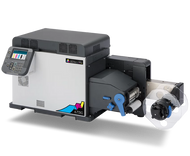Can I Use Inkjet Labels in a Laser Printer Safely?
19th Aug 2025
Key Highlights
- The short answer is no—using inkjet labels in a laser printer is not safe and can cause severe damage to your device.
- Inkjet and laser printers employ entirely different printing technologies. Inkjet printers use liquid ink and absorbent coatings, whereas laser printers use heat and toner, which require non-absorbent, heat-resistant surfaces. As a result, the label materials are not interchangeable.
- If you use the wrong type of label, you may encounter issues such as label melting, adhesive bleeding, curling, or even fuser unit contamination. This can result in expensive repairs and poor print quality, including toner flaking, smudging, or blurred text.
- Laser-compatible labels are specifically engineered to withstand high temperatures, bond with toner, and deliver sharp, instant-dry results. They also offer enhanced durability for refrigerated, high-moisture, or high-traffic environments.
- Even if you're tempted to try using inkjet labels in a laser printer just once, it's still not recommended, as even a single print job can cause long-term damage.
- There are minimal exceptions—such as low-heat test prints or internal-use labels—but these come with risks and do not guarantee safe or quality output.
- This guide reviews top-rated printers for both technologies. The Afinia LT5C is ideal for colour laser label printing, while Primera LX600, Afinia L502, VIPColor VP500, and Afinia L801 are excellent options for inkjet printing applications.
- For guaranteed compatibility, expert advice, and fast Canada-wide shipping, DuraFastLabel.ca is your trusted source for professional label printers and certified media.
If you’ve ever wondered, 'Can I use inkjet labels in a laser printer?' You're not alone. It’s a common question for small business owners and office managers trying to optimize resources or work with what’s on hand. While both inkjet and laser printers are designed to output sharp, professional-looking labels, the label materials they use aren’t always interchangeable. The short answer? Using inkjet labels in a laser printer isn’t recommended, and in some cases, it can actually damage your machine.
Why? Inkjet labels are coated to absorb liquid ink, while laser printers use heat to fuse toner onto the label surface. This difference in print technology means inkjet labels may not withstand the high temperatures of a laser printer, leading to smearing, curling, adhesive issues, or even printer jams.
What is the Difference Between Inkjet and Laser Labels?
When it comes to label printing, not all labels are created equal. Many people wonder, Can I use inkjet labels in a laser printer? But the answer hinges on understanding how each type of label is built for its specific printing technology.
Inkjet and laser printers use fundamentally different processes: inkjets spray liquid ink onto absorbent material, while laser printers use high heat to bond powdered toner onto the surface. As a result, the labels designed for these systems differ in coating, adhesive, and material structure. Printing the wrong label type in the wrong printer can lead to smudging, warping, or equipment damage, so understanding the differences is more than a technicality; it's essential to performance and safety.
How Inkjet Labels Are Designed?
Inkjet labels are specially coated to absorb liquid ink precisely and quickly. This coating allows the tiny droplets of ink to stay in place and dry without bleeding or smearing. These labels are ideal for producing vibrant, photo-quality images, which is why they’re often used in colour-intensive applications like custom packaging, promotional stickers, and retail labels.
However, the materials used, especially the coating, are sensitive to heat. So if you’re asking Can I use inkjet labels in a laser printer? Keep in mind that heat can melt the coating, ruin the print job, or worse, damage your printer’s fuser unit.
What are the Key Features of Laser Labels?
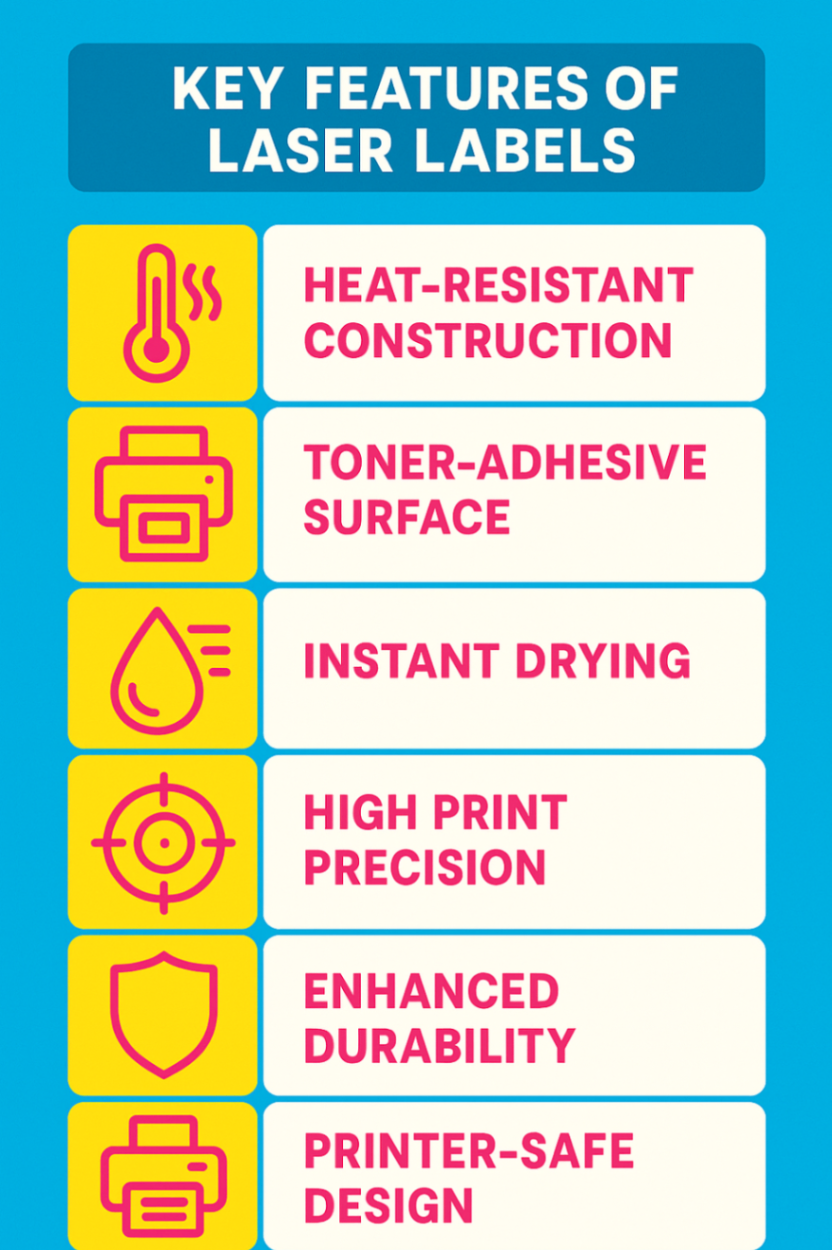
Laser labels are purpose-built for the high heat and dry toner technology used in laser printers. Unlike inkjet labels, they don’t rely on absorbent coatings; instead, they prioritize durability, sharp output, and heat resistance. If you're asking, Can I use inkjet labels in a laser printer? These features explain why laser labels are the correct choice.
-
Heat-Resistant Construction: Built to handle temperatures up to 200°C (392°F) from the printer’s fuser without warping or melting.
-
Toner-Adhesive Surface: Features a smooth, non-porous coating designed to bond with toner rather than absorb ink.
-
Instant Drying: Toner sets immediately on the label, preventing smudges or delays in handling.
-
High Print Precision: Delivers crisp, professional-quality text and barcodes, ideal for compliance and shipping labels.
-
Enhanced Durability: Performs well under stress, including exposure to refrigeration, moisture, and during transport and handling.
-
Printer-Safe Design: Prevents adhesive bleed, curling, or residue that can harm your laser printer.
Why Compatibility Matters in Label Printing?
Printer-label compatibility isn’t just about print quality; it’s about preserving your equipment and ensuring reliable results. When labels are mismatched, you risk adhesive bleeding, label curling, print distortion, or internal damage to rollers and fusers. Inkjet labels, for instance, may not be able to withstand the high heat of a laser printer and can even release fumes or cause jamming.
So while it might be tempting to mix and match in a pinch, the answer to Can I use inkjet labels in a laser printer? It's still a firm no. Always use labels that match your printer technology to ensure safety, efficiency, and the best possible outcome for your print jobs.
What Happens If You Use Inkjet Labels in a Laser Printer?
At first glance, a label might seem like just a sticky piece of paper, but the materials and coatings used on inkjet vs laser labels are entirely different. When you ignore those differences, you run the risk of serious print issues or worse, hardware damage. Many users ask, Can I use inkjet labels in a laser printer just this once? Here’s why that shortcut can backfire.
What are the Potential Risks and Issues with Mismatched Labels?
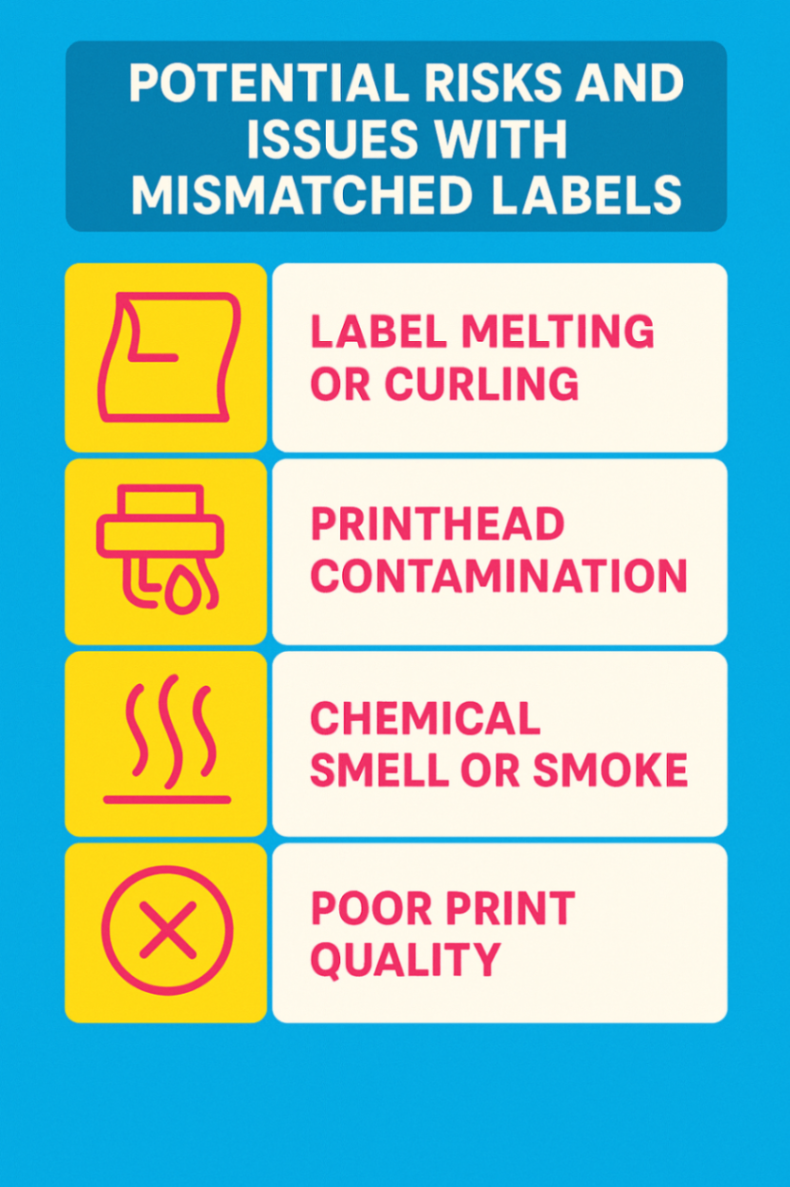
Using inkjet labels in a laser printer might seem harmless, but it often leads to:
-
Label Melting or Curling: Inkjet labels aren’t built to handle the high heat of a laser printer fuser unit. The adhesive or top coating may melt, warp, or peel.
-
Printhead Contamination: Melted material can stick to internal components, requiring professional cleaning or costly repairs.
-
Chemical Smell or Smoke: Some inkjet label coatings react to heat, emitting odours or fumes, not something you want near food or office supplies.
-
Poor Print Quality: Expect toner flaking, smudges, or incomplete prints due to insufficient bonding on the label surface.
How Laser Printing Technology Affects Label Performance?
Laser printers use a dry toner process combined with intense heat and pressure to fuse text and graphics onto the label surface. This process works perfectly with laser-specific materials, but poorly with inkjet ones. Why?
-
High Fuser Temperature: Laser printers operate at up to 200°C. Inkjet label coatings can bubble or degrade at this temperature.
-
Precision Toner Bonding: Toner particles require a surface that allows for electrostatic bonding, not ink absorption.
-
Incompatibility with Inkjet Coatings: Inkjet coatings are specifically designed to absorb liquid ink. Laser printers don’t use ink, so these coatings interfere with the adhesion of toner.
Situations Where It Might Be Acceptable
While not recommended, there are rare edge cases where using inkjet labels in a laser printer might not cause immediate issues:
-
Low-Heat Test Prints: A single, low-coverage print job on a laser printer with reduced fuser heat settings (if supported) might avoid visible damage, but it’s still a gamble.
-
Non-Critical Labels: If label durability, print quality, and safety aren’t priorities, such as for internal office use or temporary tags, you might get away with it, but expect reduced quality.
-
Trial-and-Error Learning: Some users simply test out leftover inkjet stock to “see what happens.” Please note that this may void your printer warranty and may require cleaning afterward.
Inkjet Labels in a Laser Printer: Why Compatibility Matters
When you're choosing a label printer for your business, the compatibility between label stock and print technology isn't optional; it's critical. Using the wrong labels (like inkjet labels in a laser printer) can lead to printer damage, poor adhesion, or smudging. To help you make the right investment, here’s a look at some top inkjet and laser label printers, along with their key differences in use cases, output quality, and media compatibility.
1. Afinia LT5C Colour Laser Label Printer with white toner
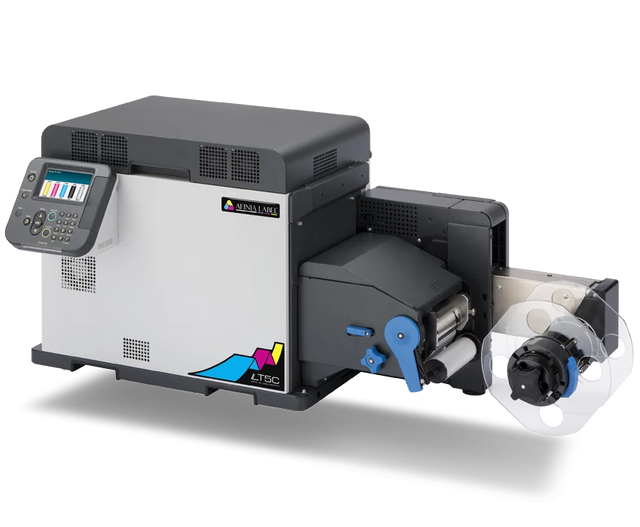
The Afinia LT5C is a colour laser label printer, ideal for businesses that require durable, waterproof, heat-resistant labels. Unique to this printer is its white toner capability, which enables printing on transparent, metallic, and dark materials, a feature that inkjet printers cannot achieve.
Key Features:
-
LED-based laser technology with full CMYK + White toner
-
Print resolution: Up to 1200 x 1200 dpi
-
Supports a wide range of specialty label materials
-
Small desktop footprint for light industrial use
Pros:
-
White toner support for clear/coloured labels
-
Long-lasting, smudge-proof output
-
Compatible with synthetic and polyester labels
Cons:
-
Not compatible with inkjet label stock
-
Higher upfront and ongoing toner costs
-
Slower than Memjet-powered inkjets for full-colour runs
Compatibility Tip:
Never use inkjet-coated labels with the LT5C; its high-heat process can destroy the coating and damage internal components.
2. Primera LX600 Inkjet Colour Label Printer
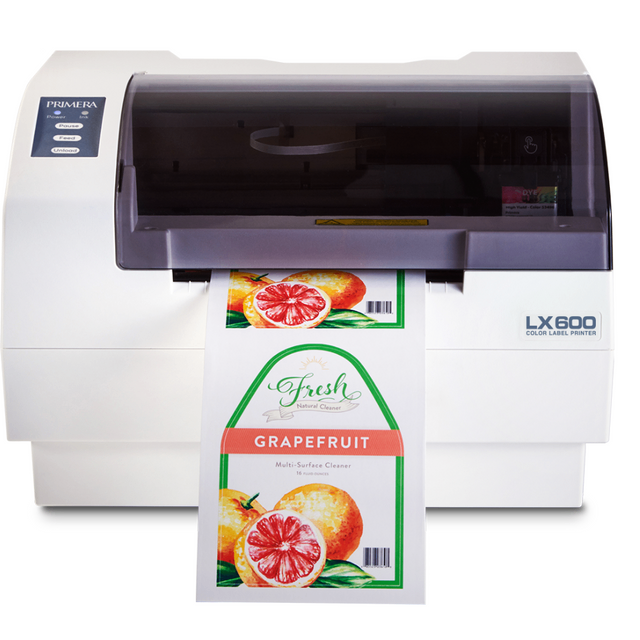
The Primera LX600 is a compact inkjet printer that’s perfect for small businesses producing colourful, detailed product labels. It uses dye-based inks to deliver vibrant results, especially on glossy media.
Key Features:
-
1200 x 4800 dpi resolution
-
Uses dye-based single ink cartridge
-
Maximum print width: 5 inches
-
Ideal for short runs and multiple SKUs
Pros:
-
Brilliant full-colour printing
-
Small footprint and easy to use
-
Great for cosmetics, food, and craft labels
Cons:
-
Not waterproof unless paired with special media
-
Not designed for industrial volumes
-
Slower than pigment or Memjet models
Compatibility Tip:
Designed specifically for inkjet-compatible media, do not use in laser printers, and avoid placing laser media in this inkjet printer.
3. Afinia L502 inkjet Colour Label Printer
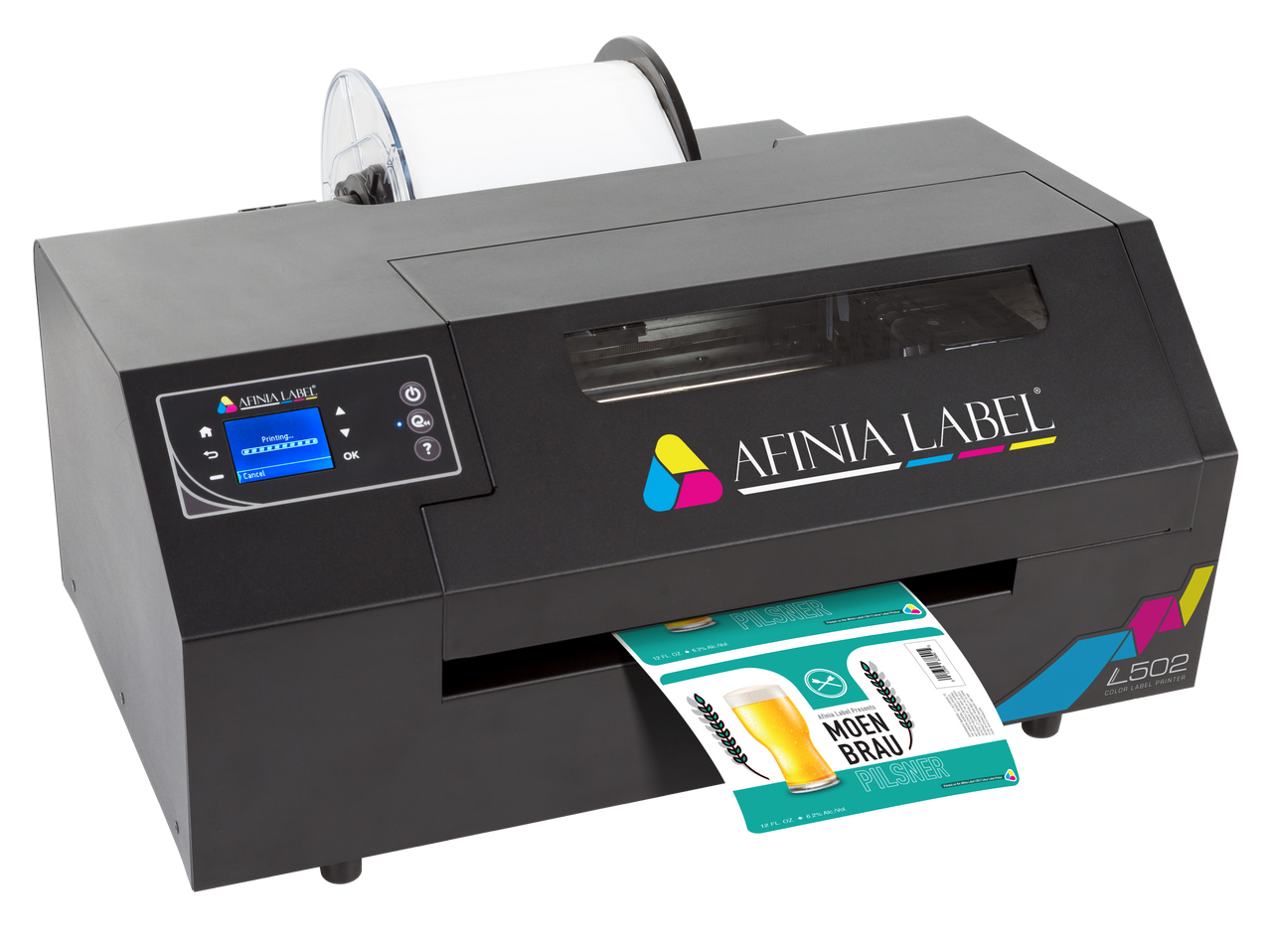
The Afinia L502 is a versatile inkjet printer supporting both dye and pigment inks, allowing users to choose between high vibrancy (dye) or durability (pigment). It’s a strong choice for food and chemical products requiring waterproof or oil-resistant labels.
Key Features:
-
Dual-ink compatibility (dye and pigment)
-
4800 x 1200 dpi resolution
-
Supports 8.5-inch wide media
-
Built for on-demand, short-run jobs
Pros:
-
Durable output with pigment inks
-
Excellent colour flexibility
-
Suitable for GHS-compliant chemical labels
Cons:
-
Requires swapping printheads when changing ink types
-
Slightly larger than entry-level inkjet printers
-
Ink costs can be higher for dye printing
Compatibility Tip:
Only use inkjet label materials with the L502. Printing these labels in a laser printer can damage the coating and reduce print quality.
4. VIPcolour VP500 Inkjet Colour Label Printer
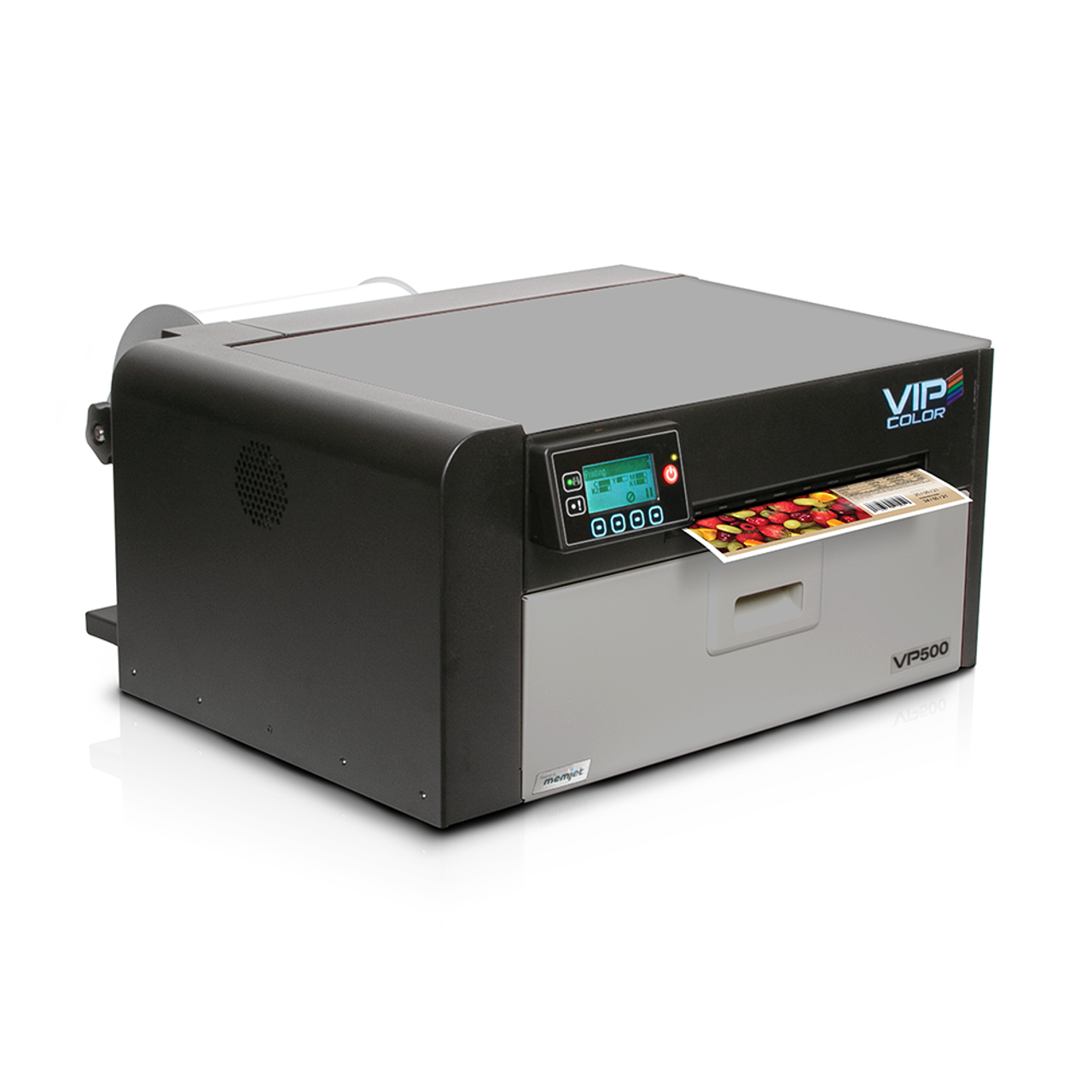
Powered by Memjet technology, the VIPColour VP500 delivers fast, full-colour output with low ink costs, ideal for mid-sized manufacturers with multiple SKUs and branding needs.
Key Features:
-
1600 x 1600 dpi resolution
-
Memjet-powered for high-speed output
-
Handles roll-fed media up to 8.5” wide
-
Supports pigment-free dye ink
Pros:
-
Fast production speeds (up to 12 ips)
-
Excellent for colourful, high-volume jobs
-
Low cost-per-label for vibrant print runs
Cons:
-
Dye ink is not water- or UV-resistant
-
Inkjet-only media required
-
Requires good label design software for optimal use
Compatibility Tip:
The VP500 is designed for use with inkjet label stock. Asking “Can I use inkjet labels in a laser printer?”, in this case, reverses the question, but the answer is still no. Each print technology needs matched media for performance and safety.
5. Afinia L801 Colour Label Printer
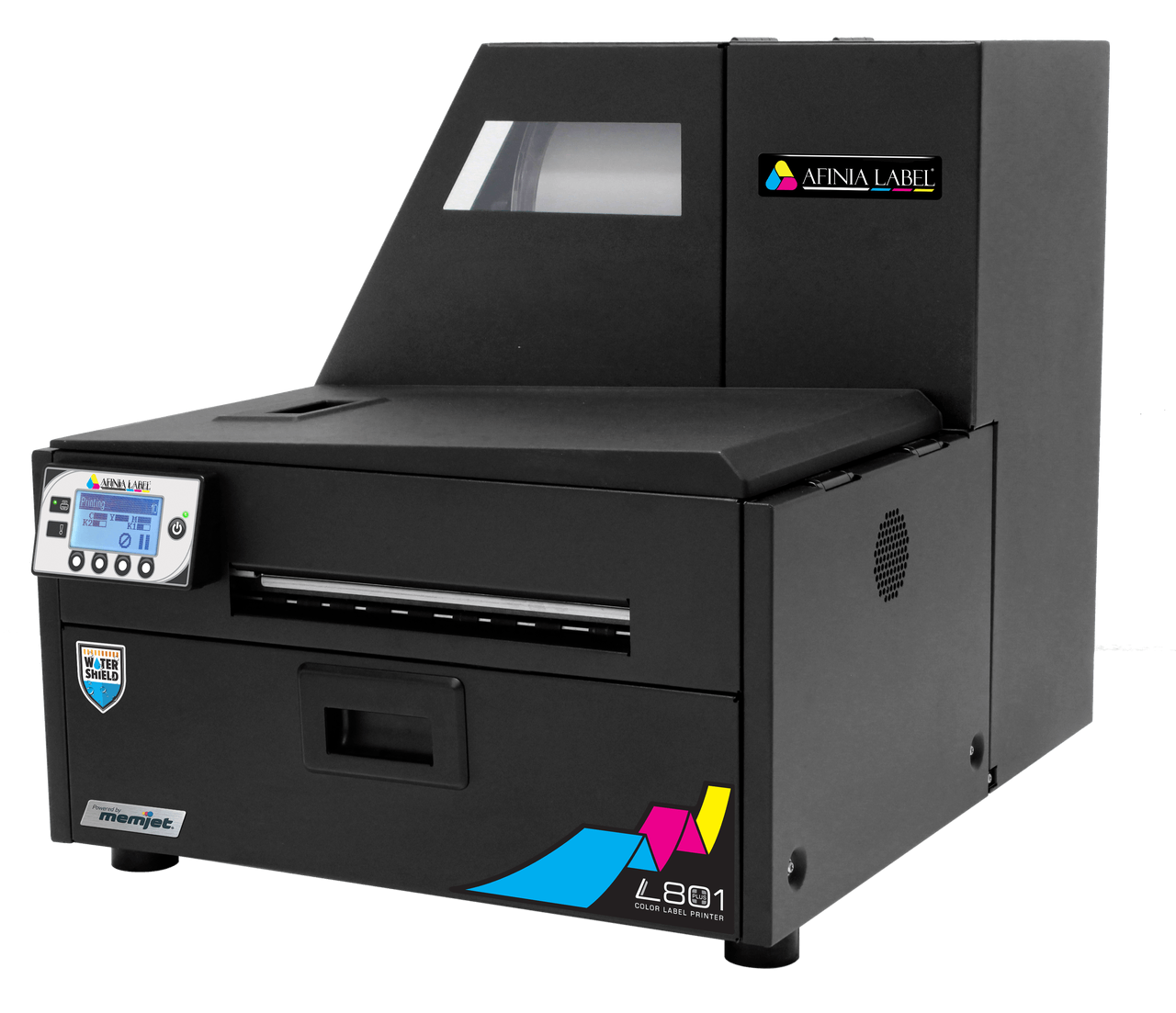
The Afinia L801 is a high-speed Memjet printer designed for commercial-scale labelling. It prints vivid, photo-quality labels at impressive speeds, making it ideal for food, beverage, and nutraceutical packaging.
Key Features:
-
1600 x 1600 dpi resolution
-
Memjet print engine
-
High-capacity ink tanks for long runs
-
8.5” max print width
Pros:
-
Exceptional print quality for retail packaging
-
Cost-efficient for large batches
-
Compatible with roll-fed glossy or matte inkjet labels
Cons:
-
Dye-based ink lacks moisture resistance
-
Large footprint
-
Needs regular maintenance for consistent output
Compatibility Tip:
As with all Memjet printers, inkjet-compatible label material is required. Using these in a laser printer would ruin both the label and potentially the fuser.
Don’t Gamble with Labels, Trust DuraFast for Precision, Protection, and Performance
When it comes to label printing, the wrong media can ruin your labels or your printer. At DuraFastLabel.ca, we make sure that never happens. Whether you need inkjet or laser-compatible labels, or you're choosing between Afinia, Primera, or VIPcolour printers, we provide tested, reliable solutions that meet your exact needs.
Why choose DuraFast?
-
Expert Guidance – We help you select the right printer, media, and accessories tailored to your specific product, volume, and compliance requirements.
-
Canada-Wide Shipping – Fast delivery with no cross-border delays or duty surprises.
-
Guaranteed Compatibility – Inkjet labels for inkjet printers. Laser labels for laser machines. No guessing, just perfect results.
-
Commercial-Grade Quality – Labels that withstand heat, cold, moisture, and handling, ready for retail shelves or industrial use.
Your printer is only as good as the labels you feed it. Don’t compromise. Choose DuraFastLabel.ca, Canada’s trusted label printing partner.
Ready to print smarter? Shop now at DuraFastLabel.ca and get expert support with every order.
Conclusion
So, can I use inkjet labels in a laser printer? Technically, no, and practically, it’s risky. Inkjet labels are not designed for the heat and toner-based process of laser printing, which can lead to poor print quality, printer damage, or safety hazards. Whether you’re using an Afinia, Primera, or VIPcolour printer, always pair the correct label media with the printer type. Investing in compatible supplies ensures optimal performance, print durability, and long-term protection for your equipment.
Frequently Asked Questions:
Can using inkjet labels in a laser printer damage my device?
Yes. Inkjet labels aren't designed to withstand the high heat of laser printers. The coating may melt, causing adhesive buildup, curling, or even damage to the fuser unit. This can lead to costly repairs or void the warranty. Always use labels designed specifically for your printer type.
Will the print quality be affected if I use the wrong type of label?
Absolutely. Inkjet labels in a laser printer can cause toner not to bond properly, resulting in smudging, flaking, or incomplete prints. The label coating may repel toner, leaving dull or blurry output. For optimal clarity and durability, match your label material to your printer’s technology.
Are there any safety hazards to consider?
Yes. Using inkjet labels in a laser printer can release fumes or cause the label coating to burn or melt, especially during high-temperature fusing. This poses fire risks and can affect air quality. It’s not just about print quality; label compatibility has a direct impact on safety.
How can I identify if my labels are made for inkjet or laser printers?
Check the packaging or product specs. Inkjet labels are often described as “ink-absorbent” or “coated for inkjet.” Laser labels mention “laser-compatible,” “heat-resistant,” or “toner-bonding.” If you are unsure, consult your supplier or test a label safely using proper media settings before using it on a large scale.
What should I do if I accidentally use inkjet labels in my laser printer?
Stop printing immediately. Remove any remaining labels from the tray, inspect the printer for adhesive residue or melted coating, and clean the rollers if needed. Run a few plain paper prints to check for toner smears. If problems persist, contact your printer manufacturer’s support line.
